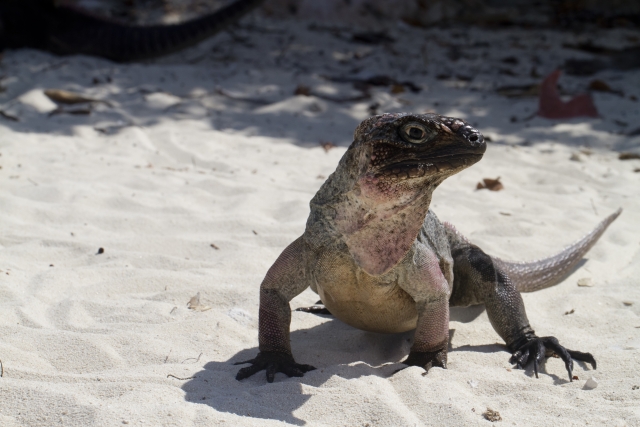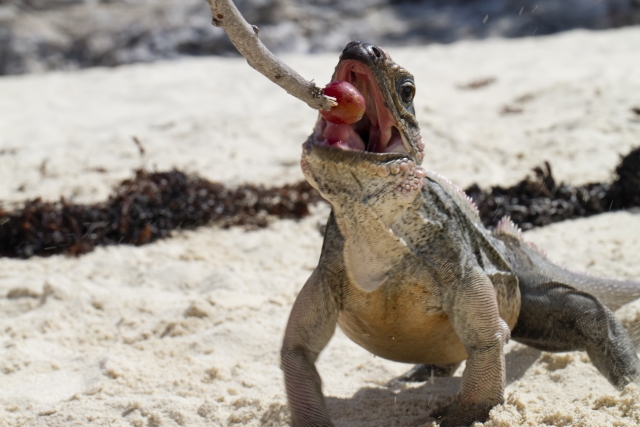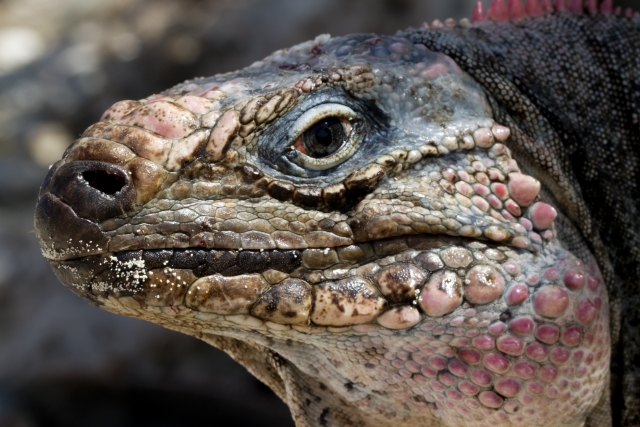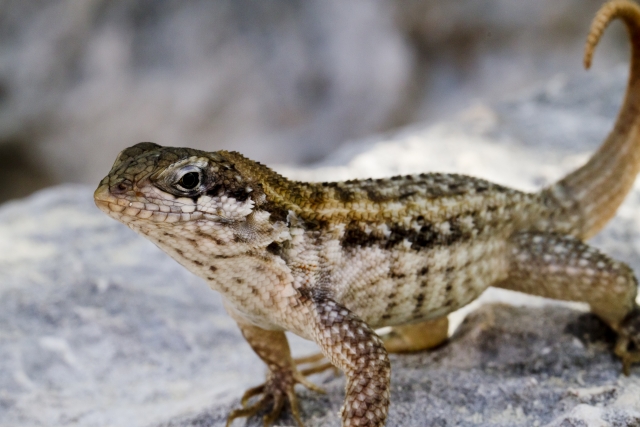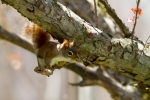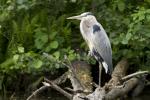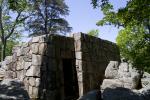lizard
Aqua Cat: Iguanas
ktuli — Thu, 11/13/2014 - 20:57
Ok - so admittedly not as cool as the swimming pigs, but we took a quick excursion between dives to go visit an island with a ton of iguanas...
Technical Data: Canon EOS 7D, Canon EF 100mm f/2.8L Macro IS USM, 1/320th sec at f/18. ISO 400. RAW processing in Adobe Camera Raw.
We fed them grapes - on a stick so they wouldn't be able to bite us! They really moved quick to get those grapes...
Technical Data: Canon EOS 7D, Canon EF 100mm f/2.8L Macro IS USM, 1/250th sec at f/18. ISO 400. RAW processing in Adobe Camera Raw.
Then they would settle down a bit and pose for some nice photos.
Technical Data: Canon EOS 7D, Canon EF 100mm f/2.8L Macro IS USM, 1/320th sec at f/18. ISO 400. RAW processing in Adobe Camera Raw.
And let us get pretty close...
Technical Data: Canon EOS 7D, Canon EF 100mm f/2.8L Macro IS USM, 1/120th sec at f/18. ISO 400. RAW processing in Adobe Camera Raw.
Then the smaller curly tailed lizards showed up (luckily we still had some grapes left and were able to sneak a couple past the iguanas to feed them too!
Technical Data: Canon EOS 7D, Canon EF 100mm f/2.8L Macro IS USM, 1/160th sec at f/18. ISO 400. RAW processing in Adobe Camera Raw.
Thanks for stopping by!
- Bill
Dragons and Depth of Field
ktuli — Thu, 02/18/2010 - 21:19
Time for another episode of "What Hangs on Our Walls at Home!"
For our first anniversary, Anya surprised me by having her parents setup a set of eight photos we had taken on the wall above my desk in our office. Each one was of a different animal from our various zoo trips (which we're hoping to resume as a hobby this spring/summer).
While the subject of this photo was something rather mundane to us at the time - after owning a pet store for about two years, Bearded Dragons aren't really anything exotic to us - what this photo lacks in an exotic subject, it makes up for two fold by being such an engaging image! In particular, by using the depth of field to its advantage.

Technical Data: Canon EOS Digital Rebel XT, Canon EF-S 18-55mm f/3.5-5.6 II at 42mm, 1/40 sec at f/5, ISO 400. No post production. National Aquarium in Baltimore, MD.
Why This Photo: I have to be honest and say that I am not 100% certain who took this photo, but the naturally curious behavior of the bearded dragon presented an obviously wonderful photo that I'm sure neither Anya nor myself could pass up.
What Works: Composition is rock solid with the dragon's face sitting perfectly on one of the hot spots for the rule of thirds. But the depth of field is what really makes this photo (I'll discuss it more below).
What Doesn't Work: The exposure in the top left of the photo is a little blown out, but somewhat offsets the dark areas in the bottom right. The focus is the tiniest bit soft (blurry) and would not work for a large print of the photo, but works just fine for the 8x12 print that hangs in the office at home.
So what is all this talk about depth of field? What the heck is depth of field, anyway?
Depth of Field is simply the amount of the photo that is focus. Perhaps some day I'll get into more about what actually causes depth of field, but today we'll talk in non-technical terms. Basically, in this photo, the head and face (and most of the beard) of the dragon is in focus. Everything else is blurred - the rocks in the background, even the dragons leg and tail that are visible. This is referred to as a shallow depth of field - when only a small portion of the photo is in focus.
Which begs the question - why would anyone want a shallow depth of field? Why wouldn't you want everything to be in focus so you could see all the details?
Well, honestly that question is one of personal preference, but in general I feel it is best used as a way to keep the viewer's attention on just the areas of the photo you have in focus. In this case, we wanted to accentuate the face of the dragon.
This can be done one of two ways. You can either completely blur the background so that nothing is recognizable or you can just blur everything that is only needed for context, but not blur it so much that it become unrecognizable.
The trick here is figuring out which to use. In this case, we want to provide the context to keep the viewer looking around this photo, but to keep coming back to the dragon's face. Since most of us know what a lizard's body looks like, the detail is not necessary in the leg and tail, but having it within the frame provides most context to make the viewer more comfortable. I guess a disembodied lizard face would be pretty discomforting to a lot of people... Or the other alternative would be a close-up of just the face of the dragon, which would not be the same kind of photo and might not be as engaging.
Instead, we use the depth of field to help direct the eyes of the viewer to the face of the bearded dragon, but because the blur is not so much that it makes things unrecognizable, the eyes of the viewer are free to wander through the rest of the photo to achieve the context of the photo.
So hopefully that helped explain a bit about why you would want to use depth of field to your advantage. I'm sure I'll have many more examples in the future, so if I did a poor job of explaining and just made you more confused, drop me a comment and let me know so I know what to do better next time.
- Bill

